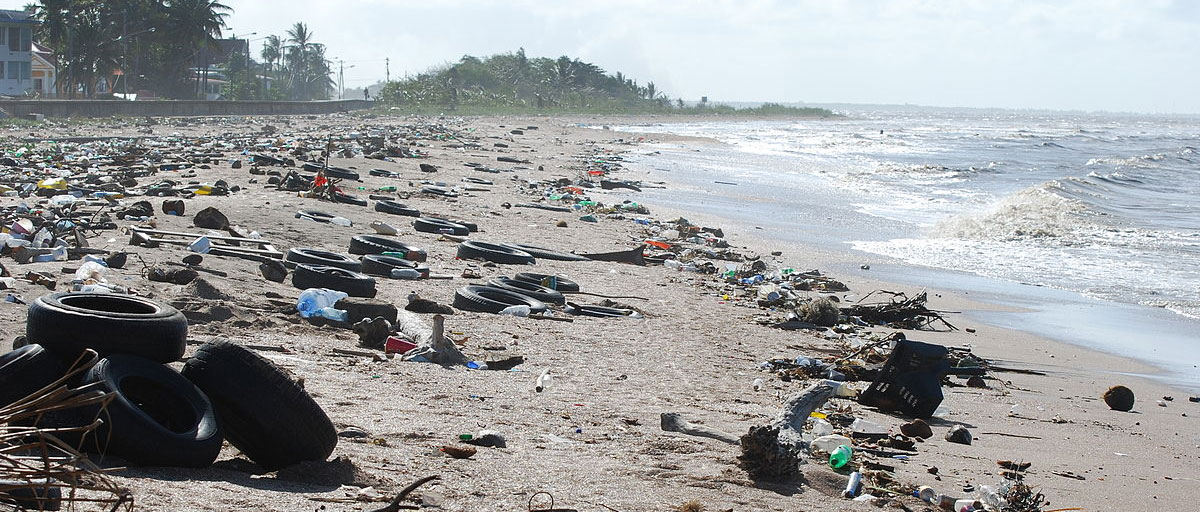Bildtext får vara max två rader text. Hela texten ska högerjusteras om den bara ska innehålla fotobyline! Photo: B. Christensen/Azote
ENVIRONMENTAL POLICY
Solutions that provide synergies
Environmental policy instruments must be used to deal with global environmental problems
- Several environmental problems must be addressed simultaneously in order to achieve optimal effect
- Collaboration between economists, social scientists and natural scientists is urgently needed to discuss solutions
- The income distributional effects of policy measures and their perceived fairness are vital determinants of the political feasibility and thus also aspects that must be considered very carefully when policy instruments are selected and designed
Global environmental problems can be addressed by means of policy instruments such as carbon dioxide taxes, building and technology standards and support for new technology, but the issues are complex and several environmental problems must be addressed simultaneously in order to achieve optimal effect.
Therefore, different research areas must work together to find solutions. This is evident from an article recently published in the journal Nature Sustainability.
The major environmental problems are global, long-term and uncertain. They are also interconnected with each other and must therefore be analyzed together in order to find solutions that provide synergies and in order to avoid “solutions” that solve one problem but worsen others.
It is not sustainable if you aggravate problems related to loss of biodiversity or the vital cycles for water or nutrients when you are trying to solve, for example, the climate problem, perhaps through a poorly conceived forest policy
Thomas Sterner, professor of environmental economics at the School of Business, Economics and Law at the University of Gothenburg, Sweden, and lead author of the article
Recognise the need for new economic policies
The Earth is in the "Anthropocene" – an era when many crucial variables for the planet are controlled by humans, and our activities and consumption patterns risk exceeding the planetary boundaries. This leads to changed climate, acidification of the oceans, loss of biodiversity and many other global environmental problems.
“Science is clear that we are at risk of destabilising the entire planet. The grand challenge is to recognise the need for new economic policies when faced with risks of irreversible changes at the global scale that would determine the future of all generations of humans on Earth,” says centre researcher Johan Rockström and director of the Potsdam Institute for Climate Impact Research in Germany. He is one of the co-authors of the study.
“Biologists, physicists and other natural scientists see and analyze the changes, and are usually the ones who write about planetary boundaries and the Anthropocene. Social scientists are experts on how society and the economy work, and both skills are indispensable when analyzing social causes and proposing solutions that are effective and politically feasible. Therefore, collaboration between economists, social scientists and natural scientists is urgently needed to discuss solutions,” says Sterner.
“The Anthropocene is a whole new era in human and planetary development. It is extremely important to adjust policy instruments and combine them in new ways. They must be adapted to phenomena that are becoming increasingly common now, for example the risk of collapse of certain natural resources, so-called "tipping points", or that human activities may have delayed influence on the environment,” says centre researcher Anne-Sophie Crépin. She is also deputy director at the Beijer Institute of Ecological Economics and one of the co-authors of the article.
Greenhouse gases must imply a significant cost
Finding effective solutions is of course important, but the income distributional effects of policy measures and their perceived fairness are vital determinants of the political feasibility and thus also aspects that must be considered very carefully when policy instruments are selected and designed.
“The aim of our research is to contribute to a better policy throughout the world to deal with the major environmental problems. A first step could be a global agreement that all emissions of greenhouse gases must imply a significant cost for the persons or companies causing the emissions,” says Sterner.
About the article
In December 2017, Thomas Sterner gathered 25 international environmental researchers at the Gothenburg School of Economics for the workshop "Policies for Planetary Boundaries". Two key participants were Johan Rockström and Will Steffen, both attached to the Stockholm Resilience Center and lead authors of several major articles on Planetary Boundaries.
The questions the researchers posed were "what economic and political measures do we need to cope with the global environmental challenges?" and "what can natural scientists learn from economists and vice versa?" The result was the article Policy design for the Anthropocene published in Nature Sustainability.
Sterner, T., Barbier, E.B., Bateman, I., et. al. 2019. Policy design for the Anthropocene. Nature Sustainability volume 2, pages14–21
Johan Rockström is a professor in environmental science with emphasis on water resources and global sustainability. He is internationally recognized scientist for his work on global sustainability issues.
Anne-Sophie Crépin's researches the interplay between economic incentives, ecosystem regime shifts, policy and human behaviour. She is also the deputy director of the Beijer Institute of Ecological Economics, where she has her main affiliation.










